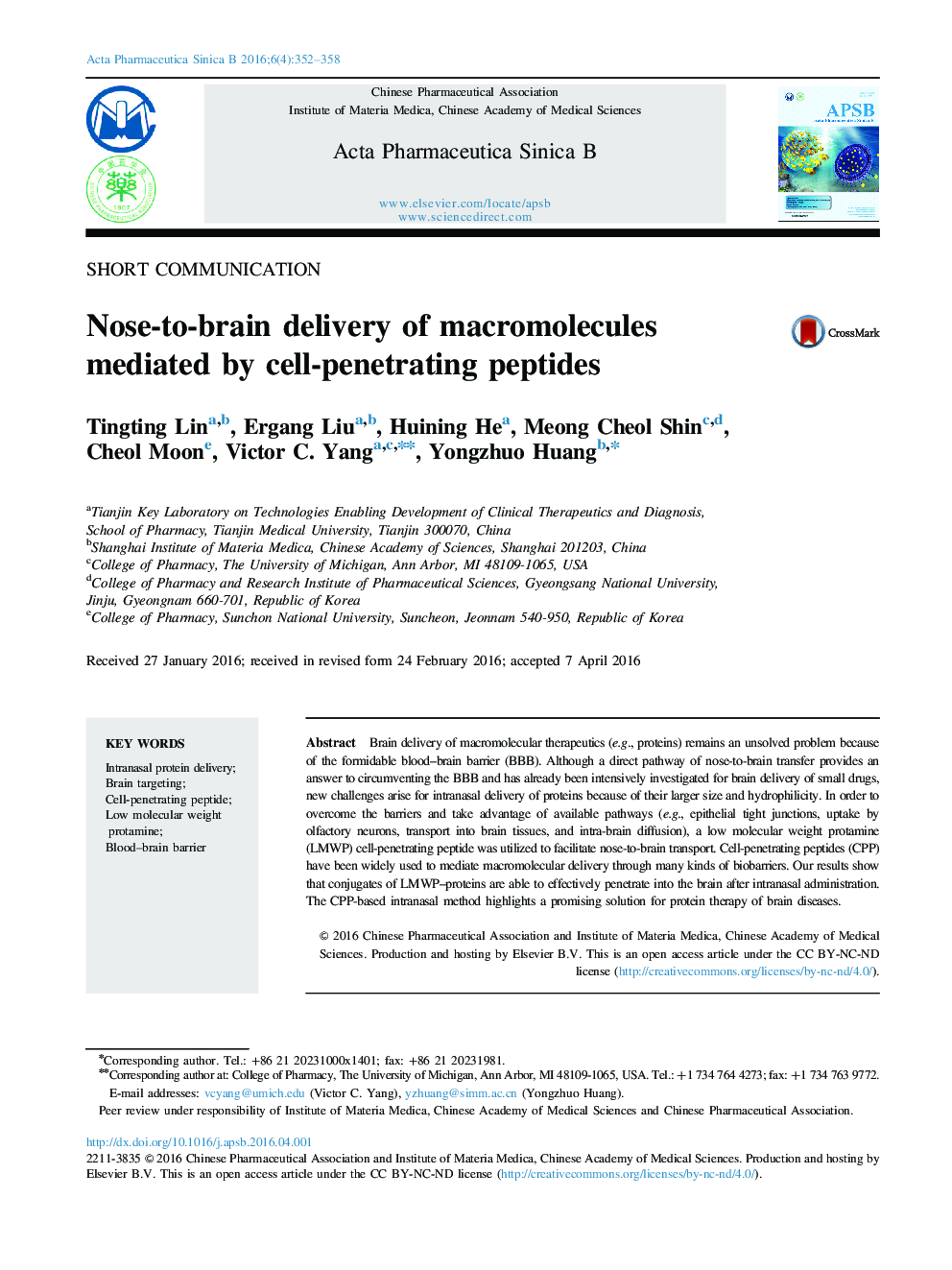| Article ID | Journal | Published Year | Pages | File Type |
|---|---|---|---|---|
| 2474447 | Acta Pharmaceutica Sinica B | 2016 | 7 Pages |
Brain delivery of macromolecular therapeutics (e.g., proteins) remains an unsolved problem because of the formidable blood–brain barrier (BBB). Although a direct pathway of nose-to-brain transfer provides an answer to circumventing the BBB and has already been intensively investigated for brain delivery of small drugs, new challenges arise for intranasal delivery of proteins because of their larger size and hydrophilicity. In order to overcome the barriers and take advantage of available pathways (e.g., epithelial tight junctions, uptake by olfactory neurons, transport into brain tissues, and intra-brain diffusion), a low molecular weight protamine (LMWP) cell-penetrating peptide was utilized to facilitate nose-to-brain transport. Cell-penetrating peptides (CPP) have been widely used to mediate macromolecular delivery through many kinds of biobarriers. Our results show that conjugates of LMWP–proteins are able to effectively penetrate into the brain after intranasal administration. The CPP-based intranasal method highlights a promising solution for protein therapy of brain diseases.
Graphical abstractThe low molecular weight protamine (LMWP) cell-penetrating peptide is utilized to mediate proteins for nose-to-brain transport. The conjugates of LMWP–proteins can effectively penetrate into the brains by noninvasive intranasal administration. The cell penetrating peptide-based intranasal method highlights a promising solution for protein therapy for brain diseases.Figure optionsDownload full-size imageDownload as PowerPoint slide
